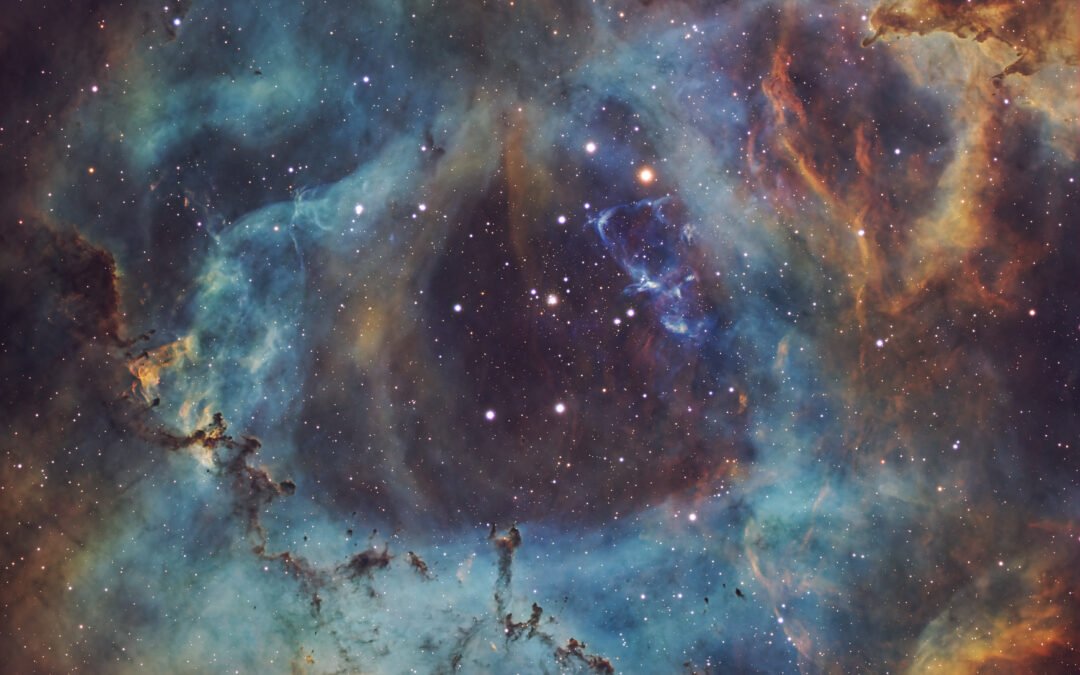I captured data for this image in February this year, but I only recently got a chance to process it. The Rosette Nebula is a stunning HII region that primarily consists of ionized hydrogen. Located in the constellation Monoceros, the Rosette Nebula spans about 130 light-years across and lies approximately 5,000 light-years away from Earth.
At the center of the nebula, you can observe an open star cluster known as NGC 2244. This cluster consists of young, hot stars that formed from the surrounding hydrogen gas and now emit intense radiation, causing the gas to glow and creating the beautiful, intricate structures we see.
Imaging and Processing
The image above was captured using a monochrome camera and six different filters over the course of four nights. I used RGB filters with shorter exposures to reveal the true colors of the stars in the field and SHO (Sulfur II, Hydrogen-alpha, and Oxygen III) filters to highlight the intricate details of the nebula. The combination of these filters allows for a rich and detailed representation of this celestial wonder.
Acquisition Details by Filters:
- ZWO Red 1.25″: 20×120″ (40′)
- ZWO Blue 1.25″: 20×120″ (40′)
- ZWO Green 1.25″: 20×120″ (40′)
- ZWO H-alpha 7nm 1.25″: 48×300″ (4h)
- ZWO O-III 7nm 1.25″: 48×300″ (4h)
- ZWO S-II 7nm 1.25″: 48×300″ (4h)
Total exposure time: 14 hours
Gear I Used:
- Telescope: SvBony SV550 122mm APO f/5.6
- Camera: SvBony SV605MC
- Mount: Sky-Watcher EQ6-R Pro
- Filters: ZWO RGB + SHO 7nm
The high-resolution version of this image with more acquisition details is available on AstroBin. Just click on the image below:


